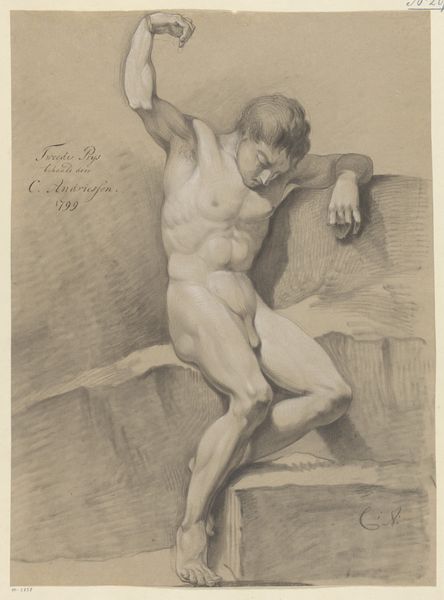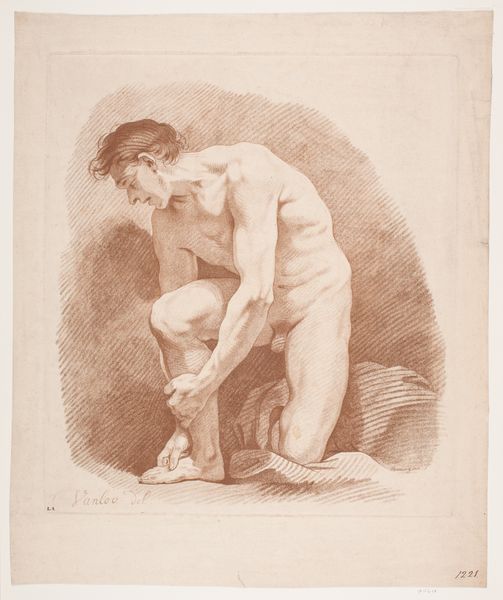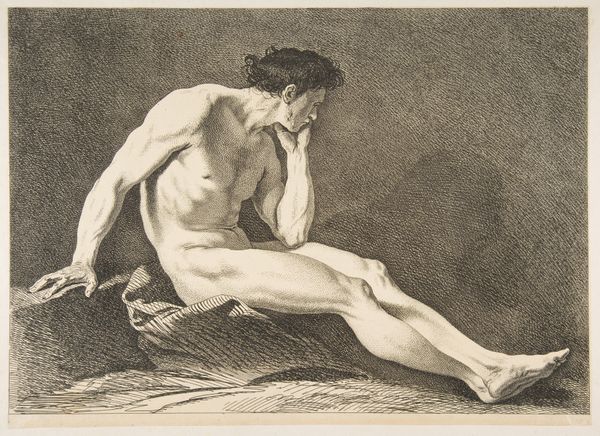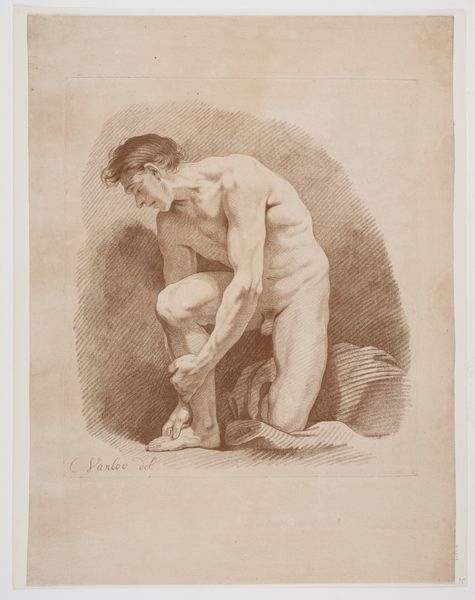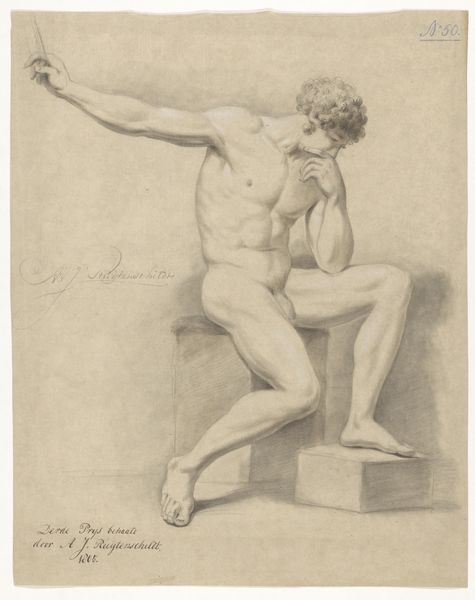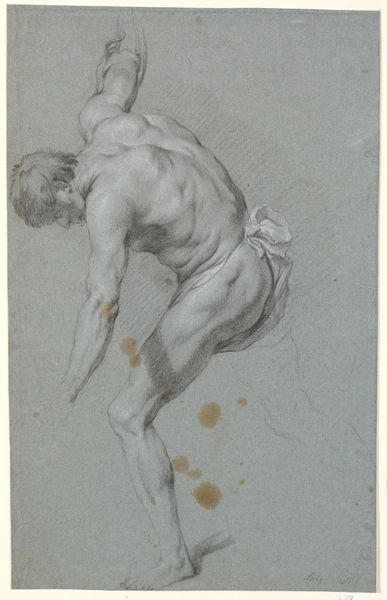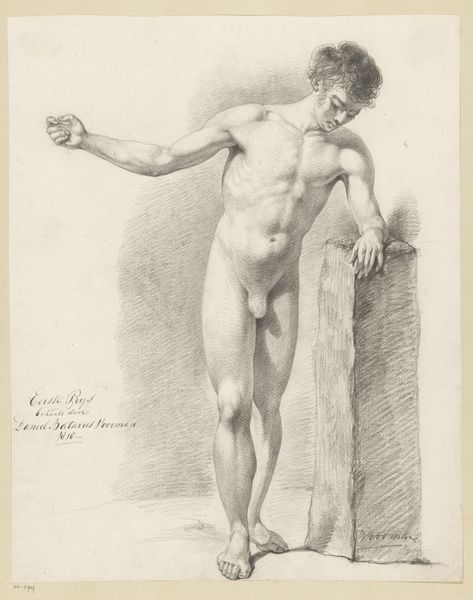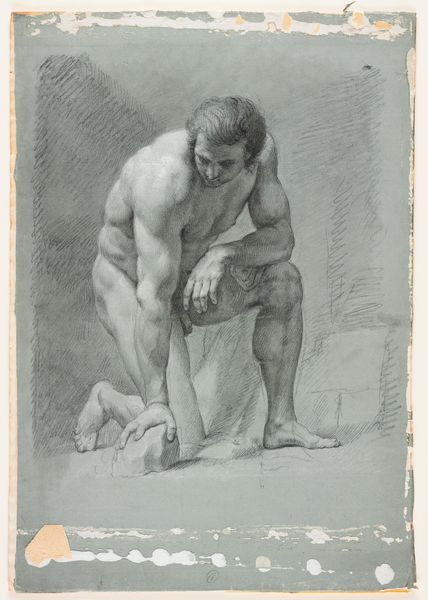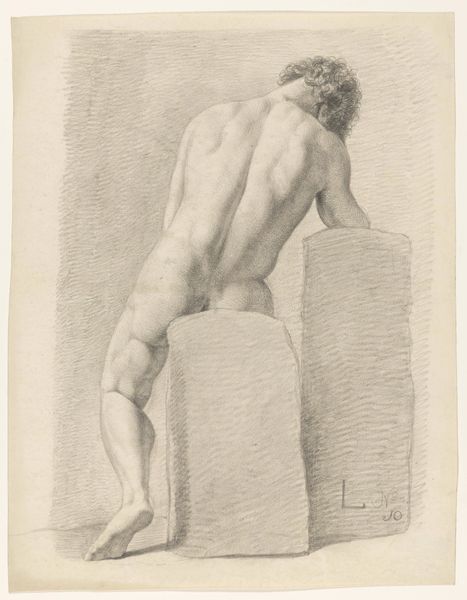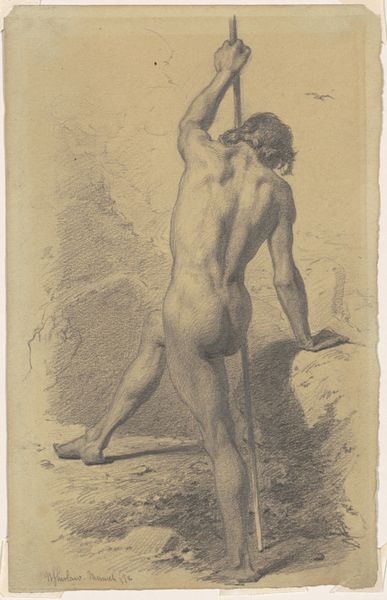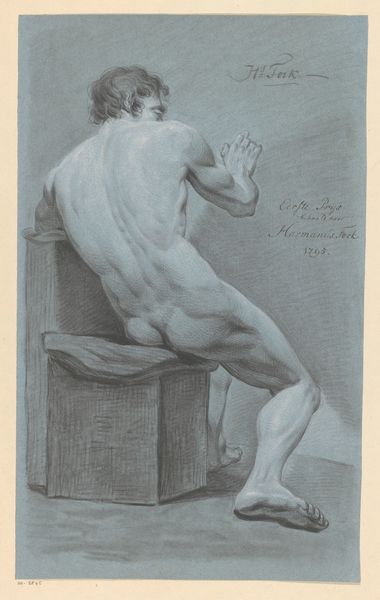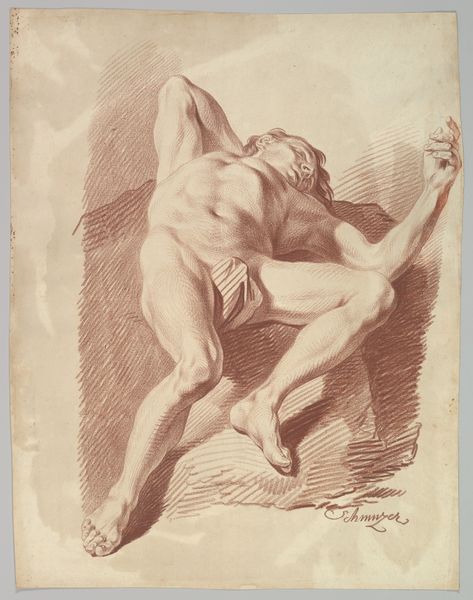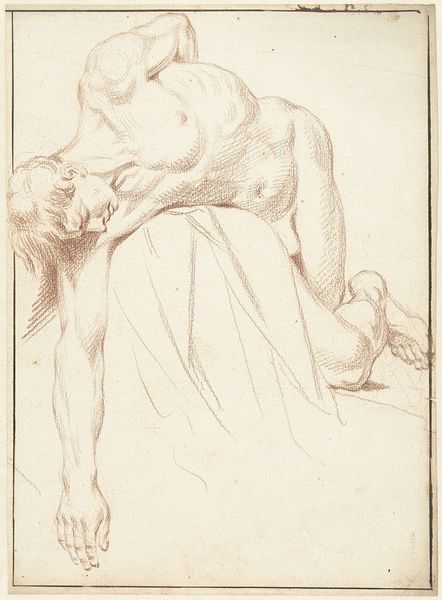
Knielend mannelijk naakt, van opzij gezien (3e prijs 1798) Possibly 1798
0:00
0:00
drawing, pencil
#
pencil drawn
#
drawing
#
pencil sketch
#
charcoal drawing
#
figuration
#
pencil drawing
#
pencil
#
portrait drawing
#
history-painting
#
academic-art
#
nude
Dimensions: height 595 mm, width 448 mm
Copyright: Rijks Museum: Open Domain
Curator: Immediately, I’m drawn to the physical labor etched in this figure, the muscularity and raw form created with delicate strokes. There's an intensity present in the process evident here. Editor: And I am interested in where this physicality is situated historically. Let’s explore this drawing further. We’re looking at “Kneeling Male Nude, Seen From the Side,” possibly created in 1798 by Johan Christiaan Willem Safft. What can we say about this pencil drawing? Curator: Well, look at how Safft employs accessible, common materials, like pencil and paper, for this figure study. This work appears as part of a larger culture of artistic instruction that favors the study of the nude human form. We're seeing the labor of art education itself rendered visible in the sketch. Editor: Absolutely. The '3rd Prize 1798' in the title is suggestive. It signals the institutional context; the role academies played in shaping artistic styles and training artists like Safft. These prize-winning works shaped public taste, especially given the themes associated with history painting present in this drawing. The artist may well have been tasked to paint subjects related to Dutch or even ancient history, requiring the demonstration of their skills in this way. Curator: Notice, though, how Safft's hand coaxes form from graphite, exploiting light and shadow to delineate the man's physique. There’s nothing ornamental, which speaks to the practicality of his making process. Editor: That may be, yet its presence in academic exhibitions and collections tells us something about the artistic value bestowed upon such works and, as the title notes, even prize-winning status. Consider how academic traditions reinforced notions of ideal beauty and masculinity in the broader visual culture, including, notably, during a tumultuous period in Dutch history, with significant political upheavals occurring during Safft's time. Curator: What stands out to me are the marks of labor. This artwork exists as both the product of education, as you say, but the means of that artistic construction itself. Editor: True. Viewing it today prompts reflection on art’s broader societal functions, particularly the power of institutions to shape and celebrate specific images of the body. A reflection on how these traditions of study endure and adapt through time.
Comments
No comments
Be the first to comment and join the conversation on the ultimate creative platform.
